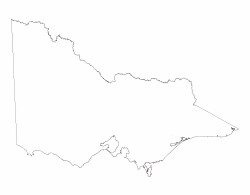7.3.5 Dunefields (Gormandale, Wonthaggi South, Liptrap)
7. Eastern Plains (EP)
7.3 High level terraces and fans
| These dunefields formed by sands that was mobilised during the dry, cold and windy conditions associated with past glacial periods. Some were as a result of wind-blown coastal sand (e.g. south of Wonthaggi, north of Cape Liptrap) and others as a result of reworked coarse Neogene sediments (e.g.mostly east of Gormandale). The most extensive dunefields extend north-east from the Eastern Uplands and cover much of a broad, low, uplifted north-easterly trending fault block defined by the Rosedale and Wonwron Monoclines The maximum elevation of this ridge is about 300 m where it adjoins the Balook block of the Southern Uplands. All of the soils on the dunefields are strongly acidic, generally with a dark brown B horizon of “coffee rock” composed of organic matter and aluminium and/or iron compounds (Podosols). The dunefield soils east of Gormandale often have a relict B horizon as a gravel layer made up of iron-cemented sand instead of distinct coffee rock. South of Wonthaggi and southeast of Andersons Inlet there are small areas of swamps and low-lying areas within the dunefields which have dark grey clay soils (Vertosols). In the same area, many of the dunefield soils are referred to as aquic Podosols as they are seasonally wetter and have highly organic, dark grey “coffee rock”. The remainder are better drained and called aeric Podosols. |  |
The original vegetation east of Gormandale probably comprised lowland forests, heathy woodlands and damp sands herb rich woodlands. South of Wonthaggi it was predominantly damp sands herb-rich woodland.


